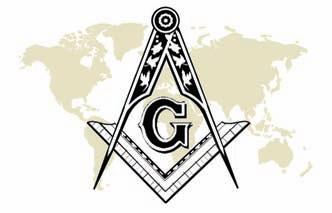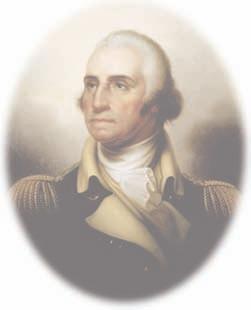GEORGE WASHINGTON, THE MASON
George Washington, The Mason G
eorge Washington was a Master Mason. Masonry had a great influence on his life. The ideals of Masonry, which first attracted him were; “it was a liberal democratic order in which Masons sought to lead mankind through education into a more equitable and just society.” Washington was the man he was, in part, because his concepts on life and morality were intertwined with Masonic philosophy. Ethical principles of leadership were inculcated into all the brethren. His exposure to this philosophy helped frame his ideas on life, both personal and professional. Even from the time of his youth his vision began to evolve into the concept of the brotherhood of man with service to others. Washington found the Masonic educational concept was divided into two parts: •
Each lodge was a school to its members for the teaching of Masonic philosophy in order to make good men better.
•
Each Mason would then teach the fraternity’s philosophy to the general community. Traits of effective leadership enhanced the ability to teach and to mentor others. Other important Masons during the Revolutionary War period were Franklin, James Otis, John Hancock, Marquis de Lafayette and John Paul Jones.
James Schouler in his book “Americans of 1776,” wrote that Freemasonry, with its sacred bond of brothThe Voice of Freemasonry
8
James P. Hodges,
Ph.D.
erhood, started to establish lodges in America about the middle of the eighteenth century. Americans who lived in the thirteen colonies followed the English tradition of Masonry. It was an institution that attracted an ever-widening class of adherents. It had ancient and solemn rituals, which attracted the esthetic George Washington. Equality of brotherhood was the spirit of the Fraternity. Within its walls, however, officers had high–sounding titles, which encouraged members to aspire to those conspicuous posts of honor. Those positions of responsibility were sought by members in order to render even more service to others. Competition among the members was to see who could do the most good. In the two-year interim between the victory at Yorktown in 1781 and the British evacuation of New York City in late November of 1783, General Washington’s military headquarters were located at Newburgh, New York. There his troops had constructed a twenty-foot by sixty-foot building called the “Temple of Virtue”. It was designed for the combined purpose of holding religious services as well as acting as a Masonic Lodge. It was in this ‘Temple of Virtue’ on March 15, 1783, that the commander in chief, through his impassioned speech, saved America from the tyranny of a military dictatorship. Many officers had suffered going without pay and allowances for up to six years. They had also been promised pension benefits and were incensed to the point of mutiny







